Seri Tribe (konkaak / comca’ac) of Sonora Mexico
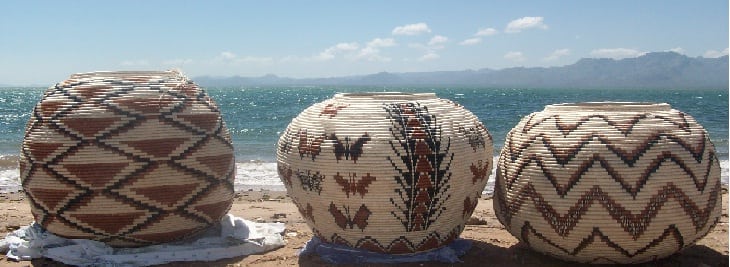
Comcáac – Seri
The Seri peoples are a traditional fishing culture that has historically resided near the coast of Sonora. Isla Tiburón (Shark Island, or Tahejöc himquij in the language of the Seri) is sacred land for the Seris, they also inhabit the San Esteban Island (Cofteecöl hipcap) and nearby coastal areas like Kino Bay, and the coastal villages of Punta Chueca (Socaaix), and Desemboque (Haxöl Iihom).
They have survived for centuries in the harsh environments of the sea and the desert, and have a unique history and culture.
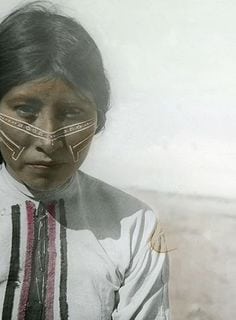
History
The Seri have been in the same area for more than 500 years. Because of their location on the coast, the Seri men had to travel distances inland for hunting and to get fresh water, and they are known for their running ability, strength and endurance. They were also known as fierce warriors, as they engaged in conflicts with neighboring tribes.
The Seri had contact with Coronado’s army in the 1500’s and with Father Eusebio Francisco Kino in the following century. Their numbers and populated land area have diminished since that time, however. Centuries ago there were once more than 5000 Seris but by 1930 their numbers had declined to 300. There are currently fewer than 1000.
While their territory used to extend southward to Guaymas, northward 75 miles from Isla Tiburón and inland to a point near Hermosillo, they are now concentrated along the coast near their sacred island of Isla Tiburón, the largest island in the Gulf of California.
There were originally six groups of Comcáac Seri:
Xiica hai iicp coii (those who live toward the north wind), also known as Tepocas or Saliñeros, who inhabited a large area to north of the other groups, along the Sonoran coast between Puerto Lobos and Punta Tepopa.
Xiica xnaai iicp coii (those that are to the south wind), also known as Tastioteños, who inhabited the coast from Bahía Kino to Guaymas.
Tahejöc comcáac (Tiburón Island people), also known as the Seris or Tiburones, who inhabited the coasts of Tiburón Island.
Heeno comcáac (desert people), who inhabited the central valley of Tiburón Island region.
Xnaamotat or Xnaa motat (those that came from the south), also known as Upanguaymas or Guaymas, who inhabited a small strip south of Guaymas between the Xiica hai iic coii and the Tahejöc comcáac.
Xiica hast ano coii (those that are in San Esteban Island), who inhabited San Esteban Island and the southern coast of Tiburón Island.
Society

The societal structure of the Comcaac is based on kinship systems that include reciprocal aid and distribution of resources that have been important to the overall survival of the group.
Every member of the tribe is entitled to request part of any food consumed in the community, whether they are invited or not. This includes the practice of Canoaa an hant cooit, the right to ask for fish from any fishing boat that arrives from the sea. The extended system of this communal sharing ensures that food and necessities are shared among family units.
With the formal integration of the Comcaac into Mexican national life, they were compelled to name a number of tribal authorities such as their supreme council, the ejidal commissariat, the communal property council and a fishing cooperative society.
Customs and Traditions
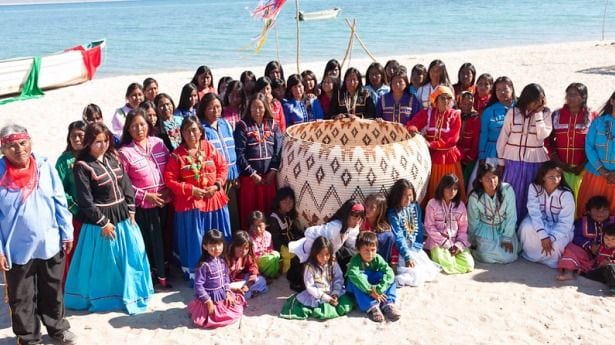
The main holiday celebrated by the Comcáac Seri is their new year, which is observed on the last day of June and the first day of July.
The Seri are very proud of their heritage and have a strong love of bright colors, evident in the traditional full length skirts worn by the woman. Probably until sometime in the mid 20th century, the women wore delicate face paint and perhaps still do on special occasions. Traditionally, religion was the belief in the power of animals; today most Seri are members of the Mexican Christian Church.
Sometime in the late 17th century the Jesuit priests tried to confine the Seri to small agricultural developments around the missions, intent on converting and making them into good Christen citizens. Tragically, the Seri were not inclined to conform. They fled, abandoning their ancestral lands to avoid suffering the consequences of Spanish despotism. Fortunately, due to the lack of rainfall and the absence of rich mineral deposits in the area, the Spanish moved on to greener pastures. However, the population dwindled down to approximately 300 or less by the 1930s. Survivors were mostly concentrated on the Isla Tiburon. In 1965 the Mexican government established a protected game preserve on the Island; since then the Seri have not been allowed to hunt there. Presently, most Seri live north of Kino Bay in the villages of Punta Chueca and El Desemboque de Los Seris (not to be confused with Desemboque, located a short drive east of Puerto Peñasco.)
They have been credited with the knowledge of over 400 species of desert plants and their uses. They are the only known people in the world to have harvested grain from the sea (eelgrass) and eaten the nutritious seeds. As expert fishermen, they have contributed extensive knowledge to modern science on the sea turtle’s biology and behavior.
They are also known worldwide for their tightly coiled baskets, beautifully decorated with intricate patterns. For the basket making, the women use the branches of the Limberbush (Jatropha cuneata) separating them into long flexible fibers. The women are also credited with the making of beautiful multicolored necklaces from seashells, seeds, flowers, colored clay beads, and dyed vertebrae of snakes, birds, fish, and sharks.
The Seri are famous for their exquisite ironwood carvings. The artist uses a hatchet, a hacksaw, a wood chisel, and a wood rasp, shaping and filing the figure before finishing the piece by hand with different grades of sand paper, followed by polishing.
The Seri are known for their beautiful art and crafts, which include wood carvings, elaborate basket weavings (in corita and hasaj styles), necklaces made from bones and shells, andunique, imaginative dolls.
The language of the Seri, Cmiique iitom, is isolated – that is, it has not been shown to be genetically related to any other native languages of the region.
And while many indigenous peoples of Sonora experience difficulty in passing their nativelanguage on to younger generations, the majority of the Seri are bilingual in Spanish and Cmiique iitom. Part of this is due to a rich oral tradition that serves to preserve their culture and history.
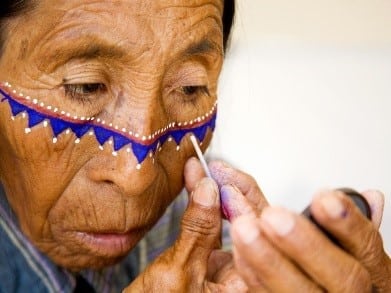
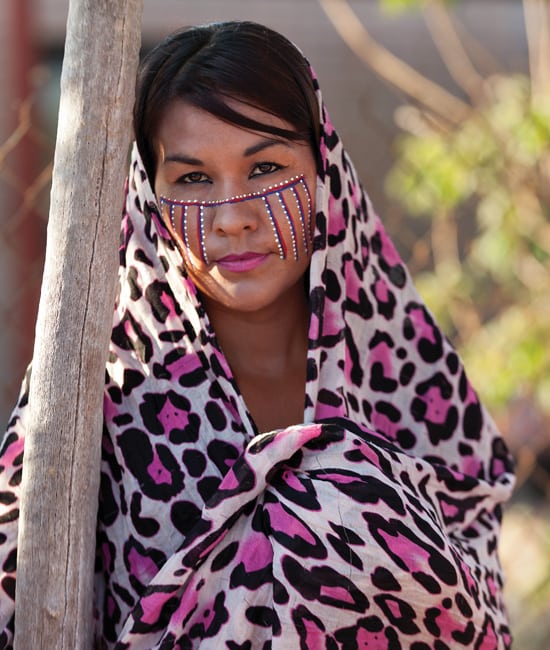
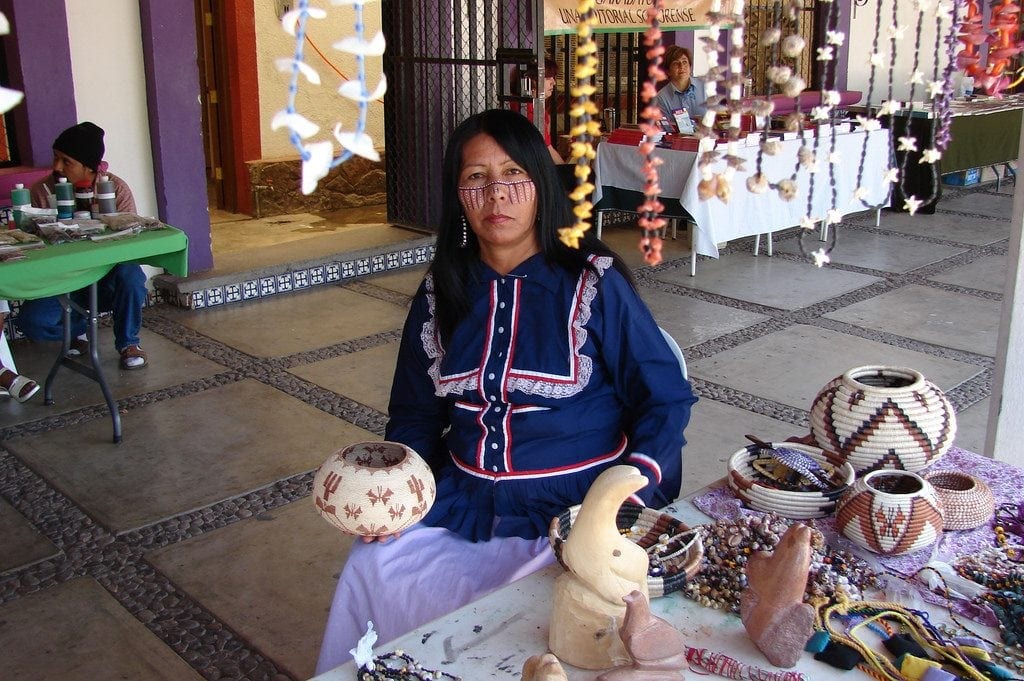
THE COMCÁACS, SERIS INDIANS- ISLA TIBURON, PUNTA CHUECA, EL DESEMBOQUE
 Their name is Comcáac : it means « people » in their language, « the one who runs fast » in “Opata” language and « the men of the sand » in Yaqui language.
Their name is Comcáac : it means « people » in their language, « the one who runs fast » in “Opata” language and « the men of the sand » in Yaqui language.
Right picture : Tiburon Island and Sonora State
They live in the northwestern part of Sonora State, by the Sea of Cortez, mainly in front of Tiburon Island that they own.
Several centuries ago, several groups emigrated from Asia crossing what is now called Bering Strait. They slowly moved to the south towards the North American continent and specially the Mexican Republic.
One of these groups was called Comcáac. It is not sure when they exactly came.
They kayaked from island to island. Later, the Spanish called them Séris.
Step by step, they took up residence on these lands, including Tiburon Island. Some evidences show the presence of other ethnic people before them. They slowly made this island their own as well as San Estéban Island.
They were parted in 6 ethnic groups but the wars and fights for territories (up to the nineties) as well as epidemics caused the extinction of two groups with similar dialects.

In 1930, the Comcáacs were only 160. Today, they are more than 600 mainly living in the villages of El Desemboque and Punta Chueca, at the north-east of Bahia de Kino by the sea of Cortez.
Left picture : logo with the turtle, emblem of the Comcáac
![]() Desert Nomads
Desert Nomads
 During their nomad life, the group built temporary houses. The “chozas” were grouped in small cores which were the center of their fishing and hunting activities. When they had no more resources, they moved to another place.
During their nomad life, the group built temporary houses. The “chozas” were grouped in small cores which were the center of their fishing and hunting activities. When they had no more resources, they moved to another place.
The habitations were built in an informal way. They used the thorn- free ocotillos for the armature. Then, they covered it with branches and turtle shells. Or they used a cactus Pitahaya and, using mud, made a room from each arm of the cactus.
Right picture : Dirt road from Bahia de Kino to Punta Chueca
The photo represents the dirt road to their village (from 35 to 40 min from Bahia de Kino to Punta Chueca). They don’t have a paved road but they have recently had an electric line installed. They don’t have water. The village supplies them with tank-trunks.
Years ago, these habitations were built to protect them from bad weather. Now, they start to live in modern habitations built with bricks, cement and sheet metal. Due to the lack of rain, the Comcáacs developed natural tendencies for fishing and hunting to the detriment of cultures. The desert, hostile to the neophytes, finally welcomed them and even bewitched this people who succeeded in understanding it. Despite the times where they suffered from the lack of food and water, the luxurious vegetation and the abundance of sea and land animals nourished them. The plants, the animals and fish revealed their secrets to this people. In return, they incorporated plants and animals in their religion, medicine, songs and even their dietary habits. The scientific world discovered recently the names and diverse uses given by the Comcáac to more than 425 species of desert plants.
This includes medicines derived from about 106 species and food derived from 94 species.
![]() The people
The people

The Comcáacs are tall and handsome.
According to some specialists, the Séris belong to the Yumano group from the Sioux-Hokana-Jokana family. They are proud of their heritage and they walk with grace and dignity. When you see them in their desert and marine habitat, you think that they belong to the nature itself.
Since years, men and women have been wearing long hair. The singles used to have it braided. The men used to wear a kind of apron above their pants. Today, most of the men don’t have a braid or an apron anymore. The women still wear long skirts and long sleeve blouses.
 They are unique because of the bright colors on their
They are unique because of the bright colors on their
«pangas» (boats) as well as on their clothes. It contrasts with the blue of the sea and the ochre of the desert. Until a few years ago, they also had discrete paintings on the face in blue, red or white.
Photos : the “pangas” or “lanchas”
The “lanchas” allowed them to go fishing and to go to Tiburon Island (in the background). This island is the biggest one in the sea of Cortez.
In order to know the Comcáacs, you need to watch them in their own environment. It is a unique experience. They are unique in their capacity to make the strangers accept their point of view. They also think that the tourists are raring to buy their craft : small braided baskets, wooden collars and sculptures made of « palofierro » (desert tree whose wood is black and hard) and shell jewelry.
You might have heard that the Comcáacs are cannibal. It is wrong. Even if they were fierce warriors in the past, they are, like everyone, repelled by the idea of cannibalism.
![]() The language
The language

The colorful atmosphere of this village grows with their surprising language. This language is characterized by a variation of sounds that look like a song. You will be fascinated the first time you hear it.
It is believed that the Comcáac language belongs to the Jokana language. However, it was classified as an isolated dialect because it is not really linked to one of these Jokana languages. There are other languages belonging to this group, especially in California. It has a verbal morphology that embraces a complex internal structure. It also has consonants that don’t exist in Spanish as well as complex sequences of consonants and long vowels. So it is not motivating to try to learn this language.
The Comcáacs can speak Spanish but they are more or less fluent. Usually, men have more opportunities than women to learn and use it.
Left picture : Sign at the entrance of the “Seri” territory
They still use their dialect to communicate between them.
![]() Social organization
Social organization
Such as most of the small size groups, the Comcáacs don’t have a formal political structure.
The unique known leaders were the war chefs whose influence was limited due to the duration of the conflict.
In other cases, the direct family members had the main power even if the « curandero » had a certain social and political control due to his position.
 As a result of the nomad life with no governmental control, the men as well as the women developed a strong independent mind that is still visible.
As a result of the nomad life with no governmental control, the men as well as the women developed a strong independent mind that is still visible.
The extended family is the center of social life. In this system of family relationship, there are several mandatory customs that control every member of the family.
Right picture : a Comcáac woman
![]() One of this customs consists in having every family member to share any food or material commodities with the others.
One of this customs consists in having every family member to share any food or material commodities with the others.
The women have a greater responsibility because they have to share many essential things, including the meat. This custom is at the origin of the constant distribution of goods and food.
The accumulation of wealth would have been considerate as a sin that nobody wants to feel guilty of.
![]() Another custom is the use of not talking to some family members. Everybody has a list of people he is not allowed to talk. The men have more restrictions than the women.
Another custom is the use of not talking to some family members. Everybody has a list of people he is not allowed to talk. The men have more restrictions than the women.
For example a man can’t directly talk to his father, uncles, brothers and children after they reach puberty, neither to his parents-in-law or his political parents.
Years ago, they had special ceremonies to celebrate several everyday facts. The most common of these rituals was the puberty ritual, a celebration for both sexes. It lasted four days and included the dance of the « pascola », games of chance with dice and shared diners.
Nowadays, the ritual is only for the girls.

Their respective godmothers paint their faces with traditional designs. They remain isolated. They have to stay awake the whole last night of the celebration and not eat meat. Before sunrise, the family women bring them to the beach where they are purified in a ceremonial way, washing their hair with sea-water. This ceremony means that they are old enough to be married.
Among the Comcáacs, it is forbidden to marry between members of a family, even cousins. Usually, the parents arrange the marriage of their children. Years ago, they even asked advice from the curandero.
When the proposition is accepted, there is a 6 months to one year period when the young man and his family offer gifts to the young girl family. The gifts are very diverse from carved wood, baskets and food to a car.
The marriage is celebrated in the local church when the girl family authorizes it.
The young couple still lives, like before, in a room attached to the man family’s house. The newly man has to take care of his in-laws until their death.
The divorces are extremely rare. The local church is also a place for practices associated with death.
Above picture : a Comcáac woman
Until recently, the funeral was organized by a deceased’s godfather. They painted their hands in black to avoid them to be soiled by the manipulation of the cadaver.
They buried some goods belonging to the deceased. His house, often made of « ocotillos » (kind of cactus) and soil, was burnt. The remaining of his belongings was given to the godfather who gave them to the deceased’s family in turn.
This exchange eliminated the possibilities of “contamination” of the deceased’s mind from the time of him leaving Earth. Recently, the Mexican federal school system also affected the life of the Comcáacs. Every child, Indigenous or not, receives a formal education. Years ago, the education was transmitted through the activities of the family and the group. The old people used to tell stories for hours. During the Puberty ceremony, some boys received special advises about how to live in peace with others.
![]() Religion
Religion
Their God, Antaái, is the Creator of Heaven and Earth.
Today, most of them are part of the Mexican Christian Church. A missionary taught them the word of Jésus in 1956. Their traditional religion was administrated by the nature, referring to many spirits whose power was sought by every people during a vision quest.
If there were results, the involved person could convert itself into a curandero and use spiritual powers to cure the sick, throw a curse and predict the future. There was no religious hierarchy.
They worshiped the sun as their God’s eye. The contact with the spirits ended privately in an individual way.
They celebrate some events in order to communicate with the spirits linked to these events. They thought that the spirits power was associated to animals, some objects, happy everyday events, individual practices as well as natural phenomenon.
Many of the old songs of the Comcáacs were linked to the spirits power.
![]() Their Art
Their Art
Many tourists are attracted by the special artistic work of this people. Such as the Eskimos are known for their ice sculptures, the Comcaács are known for the magnificent wood sculptures made of palofierro, a hard and black wood from the desert. They represent sea-lions, dolphins, eagles, cactus, turtles and other animals. They are made every day in both main villages and in Bahia de Kino.
Many of these small statues have an undulating grace that shows the skills of their creators. Some of these statues are fervently searched by collectors.
Even if the Comcaács traditionally carved some objects from the palofierro, the idea of carving life forms in order to sell them developed only during the sixties.
 At this time, Jose Astorga started to carve dolphins and turtles. Step by step, he sold more and more of these models and he even got some orders for other models.
At this time, Jose Astorga started to carve dolphins and turtles. Step by step, he sold more and more of these models and he even got some orders for other models.
Right picture : shell jewelry
It improved the quality of his figures. He sold more and more of them. In little time, other Comcáacs, men and women, started to carve and the art of making sculptures in palofierro became family businesses. They even might replace fishing by carving for a living.
These sculptures are copied and sold in souvenir shops all over Sonora.
However, you will be sure of buying an original sculpture of the Comcáacs only in the villages of Desemboque and Punta Chueca.

The fabrication of baskets is another type of their craft that began a business too. The Comcáacs have been making these small baskets since the late seventeenth century.
They used to exchange them for other products in Hermosillo, Sonora and in neighboring ranches during the nineteenth century and at the beginning of the twentieth century.
Until very recently, these baskets were used for their everyday needs. They were plain and made of braided fibers. With the arrival of metal and plastic as well as the need of decoration, they stopped making the plain baskets and are making baskets for sale. They are skillfully sewn with flexible wooden fibers from the torote tree (Jatropha cuneata). They are usually rounds. It takes a long time to make them, from one month for a small size to one or two years to a huge basket. When they finish a piece, there is a special ceremony. They are expensive and usually reserved to foreign collectors.
The Comcaacs succeed in making complex designs using natural dyes.
Left picture : young Seri Indian
The Comcáacs also make collar and jewelry with shells, seeds as well as shark and snake vertebras. These objects were once for their personal use but they are now made for sale.
According to the Seri philosophy, part of themselves is transferred to the object if they touch it. So they don’t throw away anything.
![]() Their music
Their music
As many Indigenous people in Mexico, the Comcáacs love music. They learned many songs from their ancestors. These songs tell of the sea and the desert as only they know it. The birds, turtles, mezquites, whales inspired the Comcáacs’ songs. The instrumental music was as popular as the vocal music. Their instruments are the one string violin, the musical bow, different kinds of flutes and the rasping stick. Today, they are almost not played anymore.
![]() Their economy
Their economy

Until recently, the essential incomes were brought by fishing. Now, even if fishing is still the way of living for some families, most of them live on the sale of their special art.
In some places, pollution diminishes the number of some sea animals, including the turtle. Years ago the green sea turtle was the unique important resources of the Comcaác. Many of the older people knew how to live from the desert and sea, without counting on the conveniences of the stores.
Left picture : “welcome trees”
In Tiburon Island, they also breed Cimarrones, wound horned rams, and they developed a system of controlled hunting. In 1975, they had only 17 animals; they have now 997.
The Comcáacs of our time chose to have their place in the modern world.
Text prepared by Marie Resplandy, founder and manager of the French-Mexican Association AFG AC, official correspondent in Sonora for France Expatriate and consular delegate for the General Consulate France in Mexico, living always in the state of Sonora since more than 10 years.
Link Asociacion French-Mexican AFG AC : www.lsiaug.net/afg/
French General Consulate in Mexico : www.consulfrance-mexico.org/
 Séris and Yaquis are the two most difficult and controversial ethnic groups in Sonora.
Séris and Yaquis are the two most difficult and controversial ethnic groups in Sonora.
Right picture : Séri child with make up for the Seri New Year
Sonora is the second state in Mexico by the surface. It is attractive for its nice sand beaches, coves and strong tides. The lovers of snorkeling will be seduced by splendid rock fish. The Guyamas pit (1500 m or 4921 ft) attracts more than 700 marine species. The state offers many desert beaches along a 965 km (600 mi) coast. It is a nice quiet state without any tourist inconvenience. Fishing and diving are the main activities. It is an excellent point of departure for excursions in El Pinacate Park.
The access is either by road from Tucson, either via the ferry Santa Rosalia from Baja California to Guaymas or via the airports of Hermosillo and Guaymas.
Look also at the website of the Tourist Office of Sonora state : ![]()
![]() SERI NEW YEAR (late June)
SERI NEW YEAR (late June)
 They dance for 3 days. The wise Don Antonio sings and tells old stories.
They dance for 3 days. The wise Don Antonio sings and tells old stories.
The women cook a shared diner.
Left picture : A sea turtle, emblem of the Seris
It was taken under the protection of the Séris. It will be sacrificed on July 1st according to their rituals. It will be prepared according to their traditions to feed every people and guest in the village.
The group of the Séris is legally the only one authorized to go fishing for turtles (or Cahuama).
On the evening, everyone wants to be different. They are all dressed up and wear jewels made of sharp bones and tree or plant seeds.
INCREDIBLE Seri photography by Jose del Rio, check the link for amazing images


